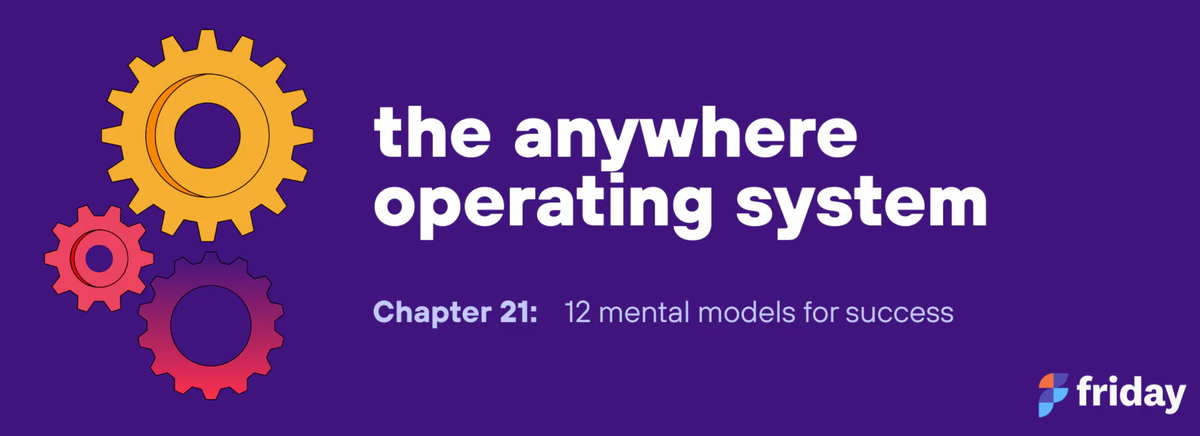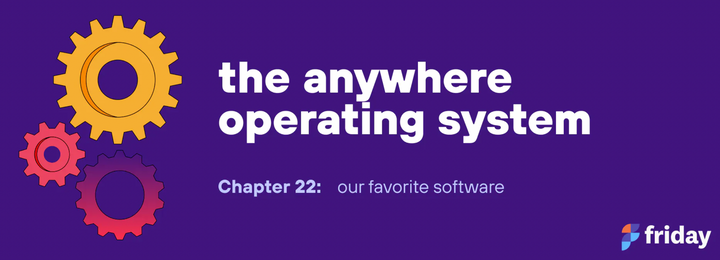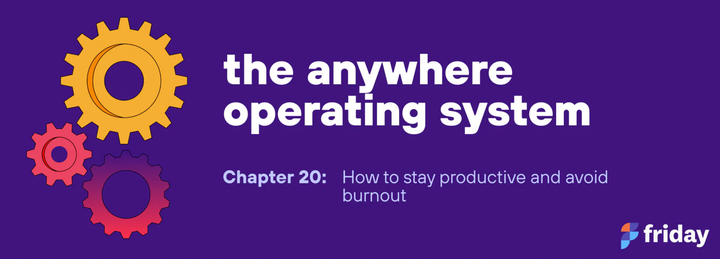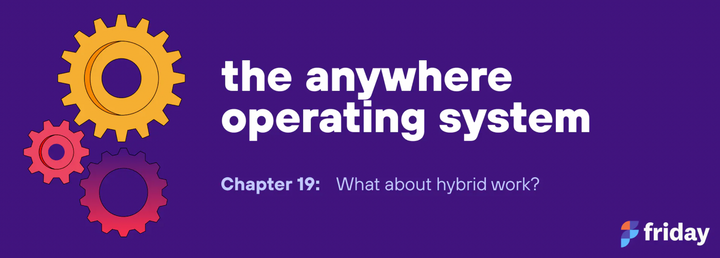Chapter 21: 12 principles for working from anywhere

In this chapter, I’m going to share 12 mental models for working from anywhere. Think of this chapter as a collection of key principles that were scattered throughout the book.
If you don’t know what mental models are, it’s a short and memorable phrase used to describe a concept, framework, or worldview that you keep in your mind.
1. Remote work isn’t about working from home
The work-from-anywhere movement isn’t about working from home. It’s not only about where you decide to work from, but it’s about when you work.
The power of this shift allows you to better integrate work and life. It also allows the company to tap into when each person is most productive, which means this shift is good for the business and the employee!
2. If it doesn’t persist, it doesn’t exist
When working from anywhere, if something is not documented, you should act like it doesn’t exist. This applies to meetings, tasks, goals/OKRs, and more.
Written artifacts (or video recordings) provide context, and this context helps everyone understand what each other is working on. Every piece of context adds another block to the foundation of your organization.
3. Communication pumps keep information flowing
Think of workplace communication like a plumber thinks about plumbing. You need pipes to make sure that water can travel from one location to another. But you also need pumps to regulate the flow.
Now substitute water for information.
If you roll out workplace chat software, Zoom, and other communication tools, you have laid the pipes for better communication, but it lacks rules and logic to create predictability. Like a water pump, you need a system that helps information flow, with as little human effort as possible.
You can use software like Friday to help automate weekly updates, daily standups, and other recurring communication, which creates a predictable flow of information and keeps everyone in the loop.
4. Communication pipes come in different types
Back to the plumber. The plumber knows that certain pipes are best for a particular job. Similarly, you need to pick the best communication tool or channel for the task at hand.
As the communication theorist Marshall McLuhan once said, “The medium is the message.” The communication channel you use shapes the way your message is interpreted. Instead of spending so much time thinking about the perfect thing to say in a meeting, consider the channel and tool you use to deliver the message.
5. Poor visibility is a liability
As Andy Grove said in his book, High Output Management:
"Information-gathering is the basis of all other managerial work, which is why I choose to spend so much of my day doing it."
As you work in different locations, it’s natural to feel disconnected from what your team is working on and how they are feeling. This lack of visibility creates a growing liability that you will need to address.
You need to confront this problem and develop ways to understand what people are working on, and how they are feeling about their work. Ideally, this doesn’t require spending your day sitting in meetings.
6. Your coworkers can’t feel like robots
When you work with people in different locations and spend most of your day communicating from behind a screen, it’s easy to feel like your coworkers are robots, not people. After all, most of the time they’re just a tiny little avatar on a screen.
If you plan on building healthy long-term working relationships, you need to constantly remind yourself that your coworkers have hobbies, interests, and career aspirations. The minute you feel your coworkers are emotionless robots is the minute your workplace relationships will start to deteriorate.
7. Clock results, not hours
When running a company from anywhere, it becomes difficult to understand what people are doing at every moment during the day. In fact, it’s impossible, so you may as well stop trying. The days of managing by walking around are over. In the industrial age, when someone wasn’t working on the factory floor, work wasn’t getting done. But things have changed. Inspiration can strike anywhere, anytime.
If you want to adapt, you will need to create clarity around the expected output of individuals, teams, and departments.
- Role clarity — What are the key outputs of the role?
- Goal clarity — What do you aim to accomplish in the next week or month?
8. Process makes perfect
If you want a predictable outcome, you need a process for achieving the goal. If you want to make great hires, you need a process. If you want to onboard people quickly and with less stress, you need a process. If you want to become a great manager and understand what’s going on at work, you need a process.
If you have a process, but it’s not written down, you don’t have a process (see mental model #2).
9. You can change everything, except time zones
Many parts of your business can be changed. You can hire new people, create new processes, change your pricing, and you can roll out new software. But the one thing you can’t change is time zone differences. If you hire someone six time zones away, there’s nothing you can do to change this reality.
Therefore, if you’re new to running a business from anywhere, consider the amount of time zone overlap that exists in your company. Save yourself some trouble in the early days and constrain time zones. It will save you pain as you get up to speed.
10. Have fewer, better meetings
Many internal meetings could have been an email. Meetings are best for building better relationships, collaborating around a complex topic, and removing blockers.
If you spend most of your time conveying information in meetings, consider ditching the meeting and sharing the information asynchronously instead.
11. Take personal responsibility
Working from anywhere is founded on the premise that employees are adults and should be treated that way. With that being said, this is a reciprocal relationship that requires that everyone take personal responsibility.
Working from anywhere is not perfect and problems will pop up. Instead of waiting for the business to create a policy to “fix” the situation, people should proactively come up with potential solutions on their own. Oftentimes, the pain someone experiences when remote are personal pain points, not team or company-wide pain points.
Each person’s work experience is suspect to variance, so each person needs to feel empowered to improve their own situation without making a broad-brush policy change.
12. Get out of the house
You aren’t supposed to spend every moment of your life at home. Social interaction is important, but you won’t find it if you act like a hermit. Volunteer in your community. Find people with shared interests. Learn a new hobby. Get out of the house!
It’s true that remote work can be more isolating by default, which is why you need to take the initiative. Maybe it’s time to get to know your neighbors?
Want to keep going? In the next chapter we discuss tools and software you should use to work from anywhere.


